Marble vs granite – what is the difference? Customers always ask this question. Marble and granite are two popular, highly sought-after natural stones which have been around for the centuries. They both have their pros and cons in terms of appearance, durability and maintenance.
What is marble?
Marble is a natural stone formed beneath the earth. It is referred to as metamorphic rock which is a rock that has been physically and chemically transformed over time. Marble is formed when limestone in the earth’s crust faces high temperature and pressure. This causes the stone to undergo a metamorphosis stage when the limestone begins to recrystallize, changing the texture of the rock and causing the calcite crystals to grow and interlock.
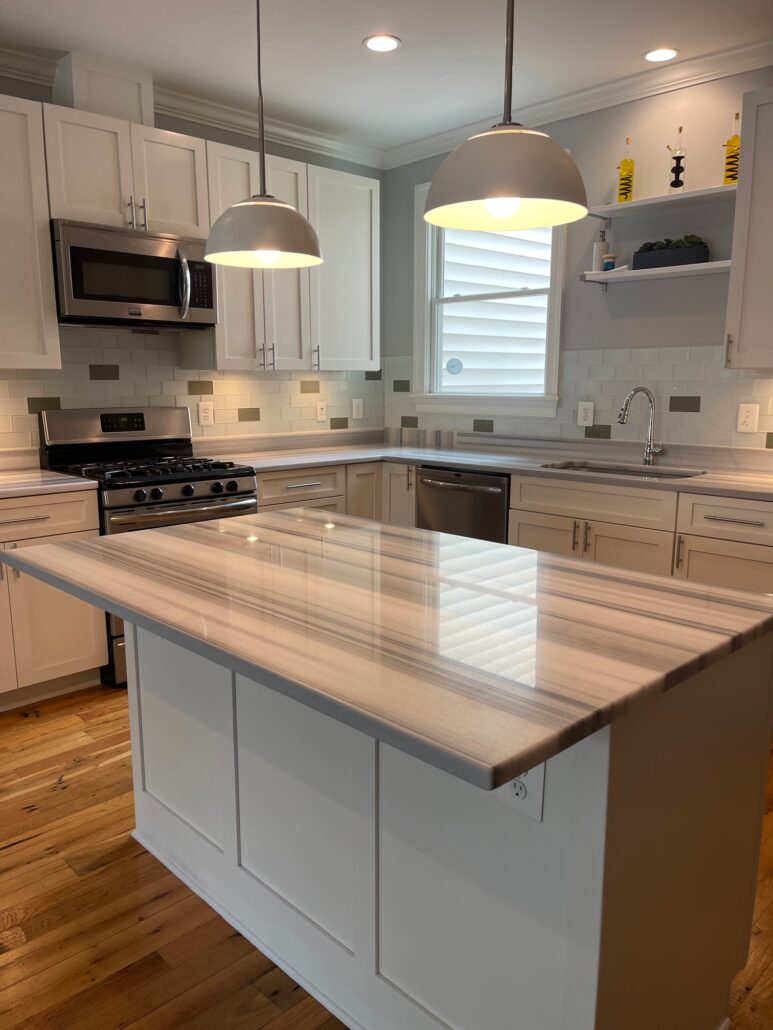
Marble Island
Beloved by emperors and artisans alike, marble has been long considered the most elegant and luxurious stone. It is also highly versatile. People use it in flooring, ornamental furnishings, fireplaces and bathrooms. It adds drama and elegance to the interior and exterior of any building. Just like any other natural stone, marble comes in a variety of colors ranging from milky white to red and black which is the result of impurities in the stone’s structure. Minerals present during recrystallization can sometimes tint the entire piece of marble in various colors. Since marble is made of calcite crystals which is a salt of calcium, marble is prone to staining especially from liquids which are acidic in nature. NOVA Stone Care does not usually recommend installing marble for exposed places like commercial kitchens.
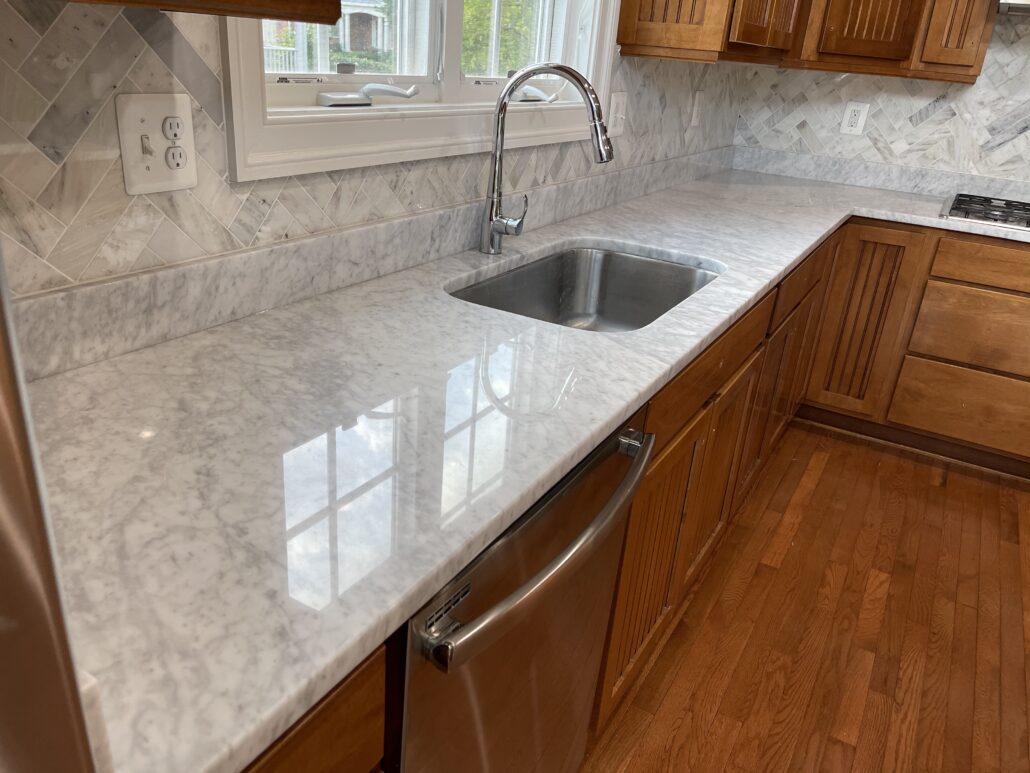
Marble Countertops
What is Granite?
Granite is a granular igneous rock which means it was formed from a cooling magma. Many items that we encounter in our daily activities are made from granite, like pavers, floor tiles and cemetery monuments. Many famous places like Mount Rushmore, Vietnam Veterans Memorial and Torres del Paine in Chile are granite hubs.
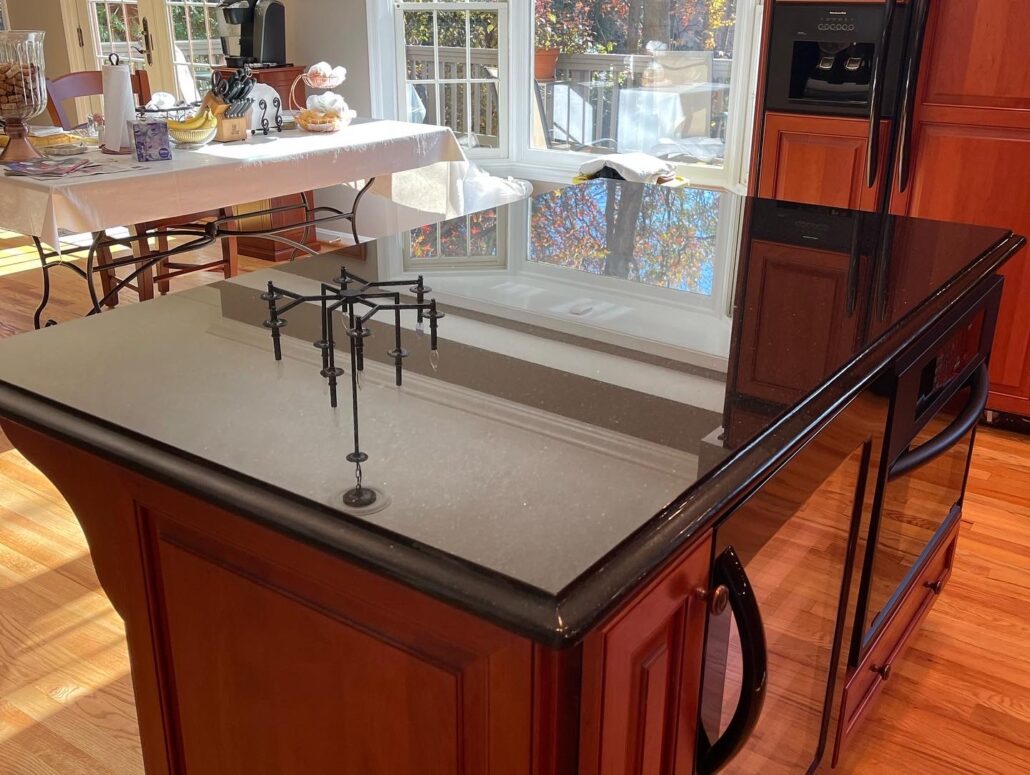
Granite Island
The composition of granite is made up of collectively interlocked quartz and feldspar minerals. It has been in use extensively since ancient times as construction, decorative and architectural stone.
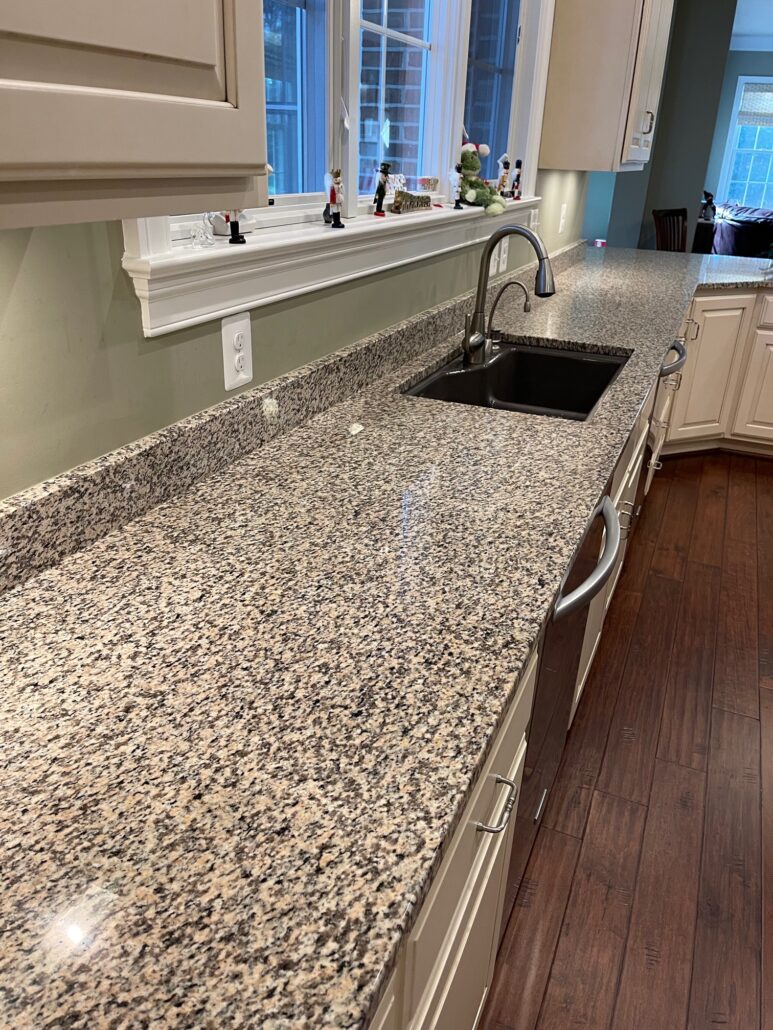
Granite Countertop
Granite vs Marble
Hardness and longevity
Granite is considered more durable than marble. It is resistant to fire and heat, scratching, chipping and cracking. Granite has long been the premier choice of designers and builders for countertops due to both its beauty and durability. Compared to granite, marble is more susceptible to fading of color and becoming duller overtime. Weather and temperature differentials can cause it to break and erode. At NOVA Stone Care we can restore your marble surfaces to its previous smooth, elegant finish and vibrant color.
Appearance
The appearances of marble and granite differ from each other. Granite is typically speckled with many different minerals. Because there are so many different minerals in nature, there are thousands of colors of granite available. Marble, on the other hand, has a grayish or cream color with veins running through it. Although there are some darker slabs available as well. Regardless of the coloration, one of the most unique aspects of marble is that it’s translucent, meaning you can see past the outer surface.
Applications
The durable quality of granite makes it a perfect choice for fireplaces, bars, floors, while marble is more suitable for less trafficked areas like bathrooms, powder rooms, and hot tub surrounds.
Reactivity to Acidic substance
Both granite and marble are natural stones with a porous structure but the metamorphic attributes of marble makes it especially vulnerable to household acids like vinegar, mustard, ketchup and citrus vegetables and fruits. Acidic substances can cause etching when they come into contact with marble. On the other hand, granite is much more resilient towards stains. Usually, liquids that have been spilled on your countertop will evaporate within half an hour, so even if you have very porous granite, spilling something like water or oil isn’t going to permanently damage it as long as the surface is covered with a well maintained permanent sealer.
Maintenance
Since marble and granite are both porous natural stones, they need to be sealed to protects against staining and etching. Marble requires sealing much more frequently than granite. It is recommended that marble is sealed twice a year, depending on the color and quality of the marble. For granite, sealing once every two years is sufficient. The actual requirement for resealing depends on how heavily you use the surface. To preserve the quality of your stone surface, you need to be diligent about sealing it. NOVA Stone Care specialist can help with that. To find out more about natural stone industry, visit Natural Stone Institute website.
Conclusion
Marble vs granite – what is the difference? Marble and granite both look beautiful, are easy to clean, and stand the test of time but they also both have unique, distinguished characteristics. Marble’s smooth, cool surface, elegant veining, unique color palate and luxurious aesthetics makes it attractive to home owners and real estate agents. If you want the luxurious look that can be crafted to suit your needs and are not afraid to put some time and money in maintenance, go for marble. If you want a natural stone with more durability, scratch resistant properties and less wear and tear ability, then granite is the best option for you. When it comes to granite and marble maintenance and restoration no one pays more attention to detail than NOVA Stone Care specialists. Check out our project gallery section for more info and pictures. We breathe life into your stone.


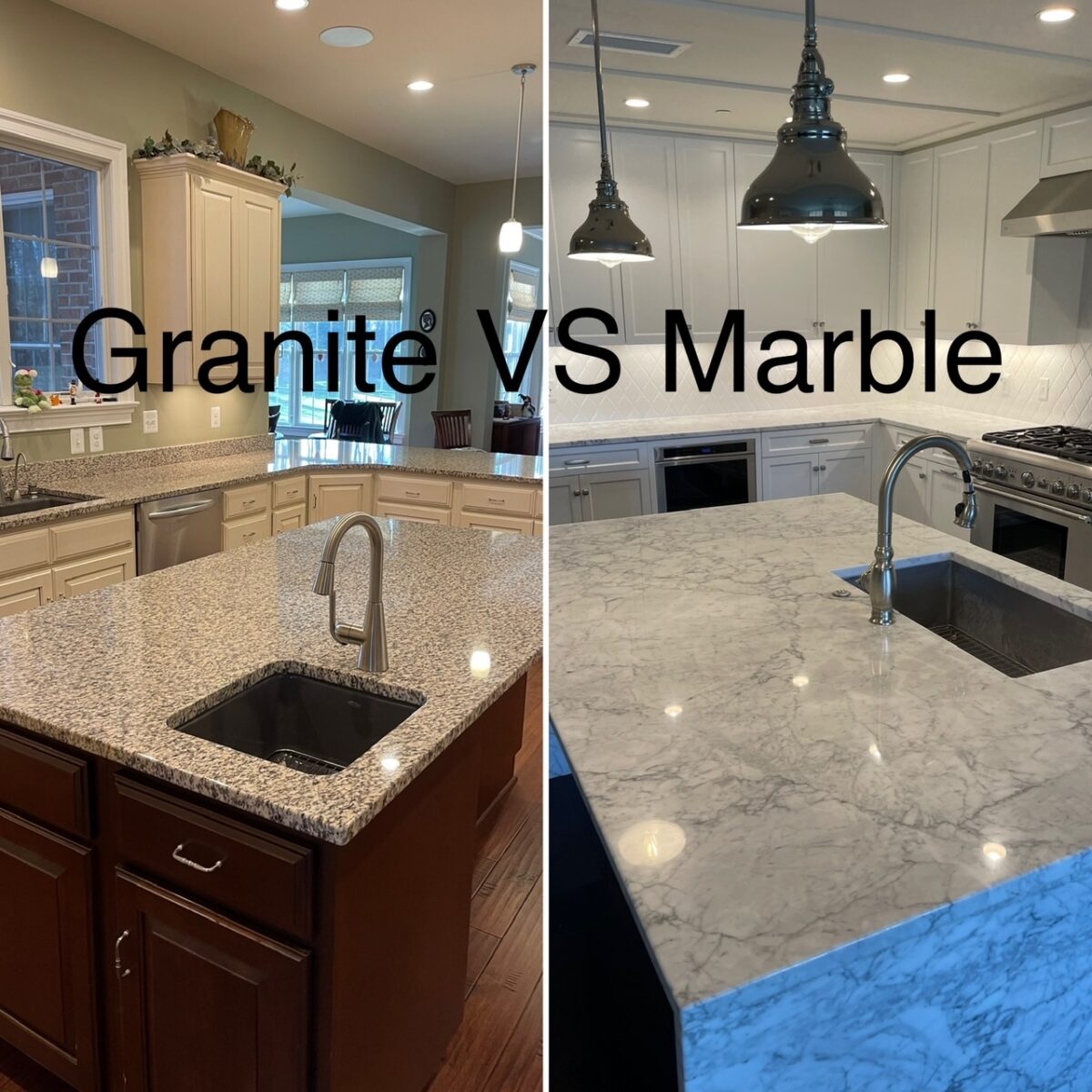
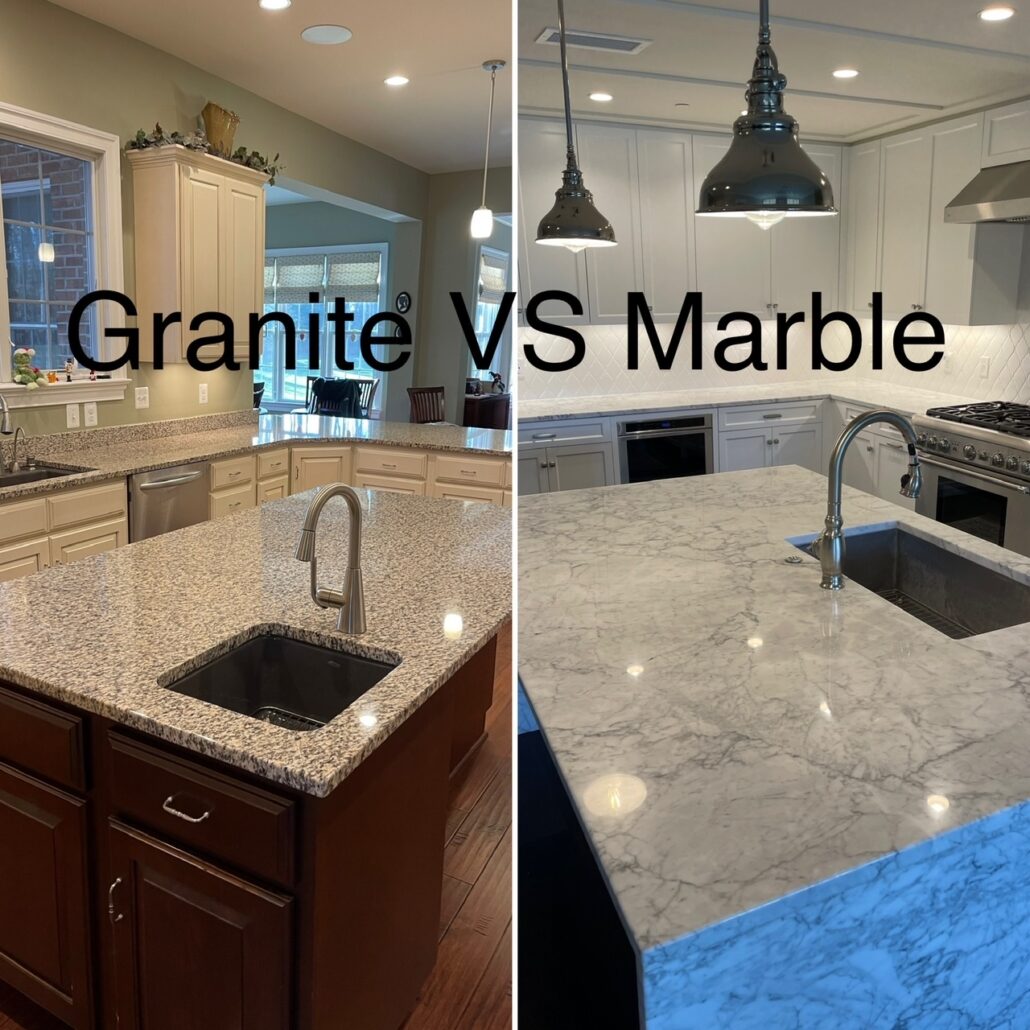
You must be logged in to leave a reply.